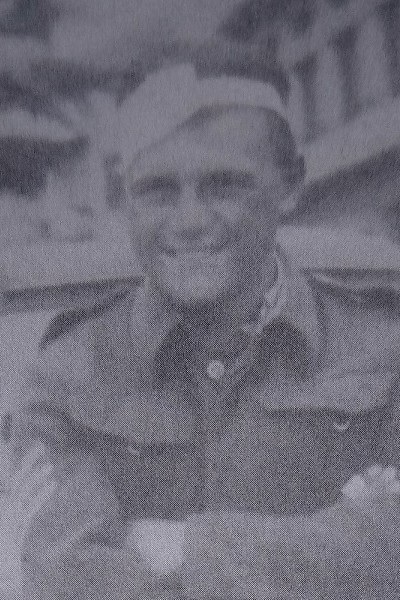Kline, Harry
- Date of birth:
- March 22nd, 1918 (London, Great Britain)
- Date of death:
- June 23rd, 2010
- Service number:
- 321001
- Nationality:
- British
Biography
Harry Kline was an apprentice electrician when war broke out. He quit his training and joined the Royal Engineers. Although he registered with various units like commandos and paratroopers, he was not initially involved in the war. That changed after he was sent to North-Africa where he saw action. From there he was sent to officer’s training in Palestine from which he graduated. 1944 he was stationed in Italy and put in charge of a unit tasked with reconnaissance, laying and clearing of mines, demolition and building of bridges.
Contrary to his operational time, he considered the post-war period dull and could not see himself returning to the position he had been in before the war. He took up studying again, was employed by Unilever and later by WS Atkins, a large construction firm.
When the Korean war broke out, he volunteered for the Army again and ultimately was sent to Suez. Afterwards he returned to WS Atkins. June 13th, 1957 he was made a MBE.
He retired in 1983 and became a fund raiser for various charities.
Do you have more information about this person? Inform us!
- Period:
- Second World War (1939-1945)
- Rank:
- Lieutenant
- Unit:
- Corps of Royal Engineers (London E.2)
- Awarded on:
- October 18th, 1945
"On 10 April 45 at map ref 462547 Lt Kline was ordered to build a Bailey bridge for use by Fantails* on the following morning, and was also infomed that it was vital for a surpise attack by infantry. Lt. Kline recced the site and found a very large block of reinforced concrete, still attached to the blown and submerged bridge immediately in front of the bank-seat on the opposite abutment. Divesting himself of his jacket he swam across with the NCO and fixed the charges and then blew the demolition witch proved entirely succesful. During the whole of this time verey lights were put up by the enemy who were in clos proximity. The bridge was finally erected as dawn broke, when it came under heavy accurate fire from enemy 150mm guns. Two shells hit the ramp of the bridge and destroyed it, but quite heedless of danger, Lt Kline with a small party, repaired the ramp - ebing forced several times to take cover from spandau fire ffrom a house 800 yards away.
Fantails and tanks crossed this bridge and the subsequent operation was an entire success.
During the whole of the period, Lt Kline was an inspiration and a driving power behind his platoon. He is a perfect example of the british spirit to win through regardless of the odds and the undying devotion of every man in his platoon."
*Codename for amphibious armoured troop carriers also named Buffalo Fantails.
Sources
- Photo 1: Robert Kline
- - Copy of the original recommedation signed by Field Marshal Harold Alexander - Stiwot Archive
- Supplement to The London Gazette Issue 37310 published on the 16 October 1945
- Welwyn Hatfield Times
- Support for Eating Disorders
- Cornwell E.L., Who's Who in Britain's Railway Industry, Ian Allen Printing



